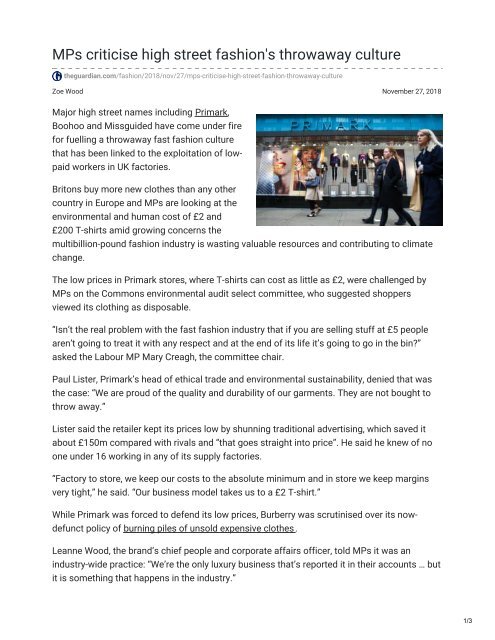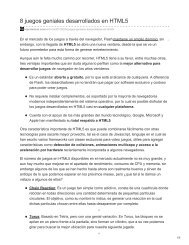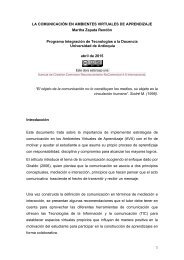theguardian.com-MPs criticise high street fashions throwaway culture
You also want an ePaper? Increase the reach of your titles
YUMPU automatically turns print PDFs into web optimized ePapers that Google loves.
<strong>MPs</strong> <strong>criticise</strong> <strong>high</strong> <strong>street</strong> fashion's <strong>throwaway</strong> <strong>culture</strong><br />
<strong>theguardian</strong>.<strong>com</strong>/fashion/2018/nov/27/mps-<strong>criticise</strong>-<strong>high</strong>-<strong>street</strong>-fashion-<strong>throwaway</strong>-<strong>culture</strong><br />
Zoe Wood November 27, 2018<br />
Major <strong>high</strong> <strong>street</strong> names including Primark,<br />
Boohoo and Missguided have <strong>com</strong>e under fire<br />
for fuelling a <strong>throwaway</strong> fast fashion <strong>culture</strong><br />
that has been linked to the exploitation of lowpaid<br />
workers in UK factories.<br />
Britons buy more new clothes than any other<br />
country in Europe and <strong>MPs</strong> are looking at the<br />
environmental and human cost of £2 and<br />
£200 T-shirts amid growing concerns the<br />
multibillion-pound fashion industry is wasting valuable resources and contributing to climate<br />
change.<br />
The low prices in Primark stores, where T-shirts can cost as little as £2, were challenged by<br />
<strong>MPs</strong> on the Commons environmental audit select <strong>com</strong>mittee, who suggested shoppers<br />
viewed its clothing as disposable.<br />
“Isn’t the real problem with the fast fashion industry that if you are selling stuff at £5 people<br />
aren’t going to treat it with any respect and at the end of its life it’s going to go in the bin?”<br />
asked the Labour MP Mary Creagh, the <strong>com</strong>mittee chair.<br />
Paul Lister, Primark’s head of ethical trade and environmental sustainability, denied that was<br />
the case: “We are proud of the quality and durability of our garments. They are not bought to<br />
throw away.”<br />
Lister said the retailer kept its prices low by shunning traditional advertising, which saved it<br />
about £150m <strong>com</strong>pared with rivals and “that goes straight into price”. He said he knew of no<br />
one under 16 working in any of its supply factories.<br />
“Factory to store, we keep our costs to the absolute minimum and in store we keep margins<br />
very tight,” he said. “Our business model takes us to a £2 T-shirt.”<br />
While Primark was forced to defend its low prices, Burberry was scrutinised over its nowdefunct<br />
policy of burning piles of unsold expensive clothes .<br />
Leanne Wood, the brand’s chief people and corporate affairs officer, told <strong>MPs</strong> it was an<br />
industry-wide practice: “We’re the only luxury business that’s reported it in their accounts … but<br />
it is something that happens in the industry.”<br />
1/3
Online retailers Asos, Boohoo and Missguided were questioned about the health checks<br />
carried out on the large number of Leicester factories they worked with.<br />
An investigation by Channel 4’s Dispatches alleged last year UK factories supplying retailers<br />
such as River Island, New Look, Boohoo and Missguided were paying workers between £3 and<br />
£3.50 an hour. A Financial Times investigation (£) also found examples of exploitation in<br />
Leicester factories.<br />
Creagh questioned how it was physically possible for Manchester-based Boohoo to sell UKmade<br />
dresses for £5 when the hourly minimum wage was £7.83.<br />
The <strong>com</strong>pany’s joint chief executive Carol Kane said the <strong>com</strong>pany did not make any profit on<br />
the £5 dresses, which were “loss leaders” designed to attract shoppers to its website. The<br />
typically short dresses, made out of polyester and elastane, featured no zips or buttons, so<br />
were easy for machinists to run up, she said.<br />
“We do not make a profit on a £5 dress,” said Kane, adding that the cost price of the garments<br />
was even less at £2.50 to £3. “It’s a loss leader. It’s a marketing tool designed to drive visitors<br />
to the website.”<br />
Asos and Missguided told the hearing they had pulled production from a number of factories<br />
in Leicester that fell short of their standards.<br />
The select <strong>com</strong>mittee is examining the impact of clothing production, ranging from<br />
environmental cost to worker conditions, especially when garments are produced cheaply and<br />
quickly in response to fast fashion trends.<br />
With 300,000 tonnes of clothing sent to landfill every year in the UK, Primark said it would<br />
launch a clothing collection service in all its stores next year in a similar vein to Marks &<br />
Spencer’s “shwopping” scheme.<br />
But Mike Barry, M&S’s head of sustainable business, said collecting unwanted clothes was not<br />
the biggest problem for the industry – it has collected 30m garments over the past decade –<br />
but what to to with them, given the lack of a domestic industry to process the material. “It is<br />
quite possible to prevent clothing going to landfill but much harder to do something with the<br />
fibres you recover.”<br />
The environmental cost of UK fashion<br />
Britons spend £52.7bn a year on fashion, according to the government-backed Waste and<br />
Resources Action Programme (Wrap). The lion’s share (£47.4bn) goes on clothing while<br />
£4.5bn is spent on accessories.<br />
The amount of clothes bought each year continues to rise – 1.13m tonnes in 2016, up from<br />
950,000 tonnes in 2012, according to a 2017 Wrap report.<br />
2/3
The total carbon footprint of the clothing worn in the UK was 26.2m tonnes of CO2e in 2016,<br />
up 9% on 2012. The carbon footprint per tonne fell 8% but was outweighed by the increase in<br />
consumption.<br />
About 1m tonnes of clothing is cleared out of wardrobes every year. Of that, 700,000 tonnes is<br />
collected for reuse and recycling with the remainder sent to landfill or incinerated, at an<br />
estimated cost of £82m.<br />
Share on LinkedIn<br />
Share on Pinterest<br />
Share on WhatsApp<br />
Reuse this content<br />
3/3

















